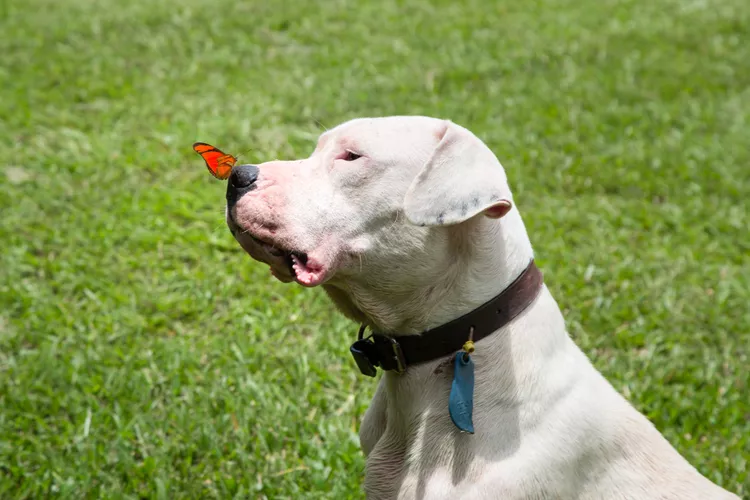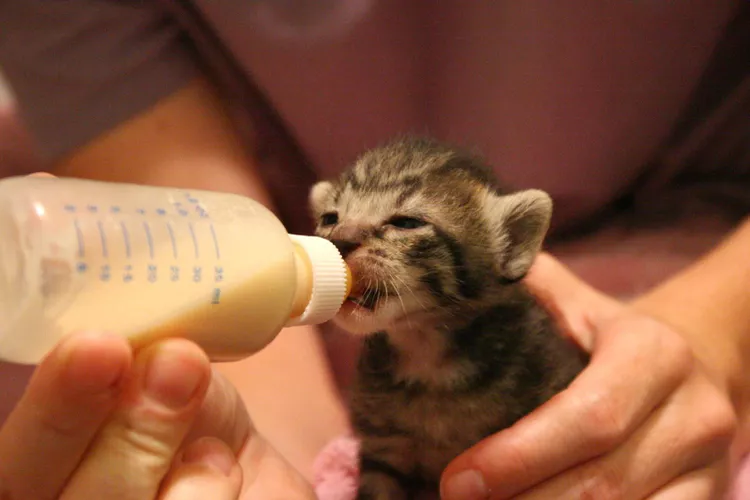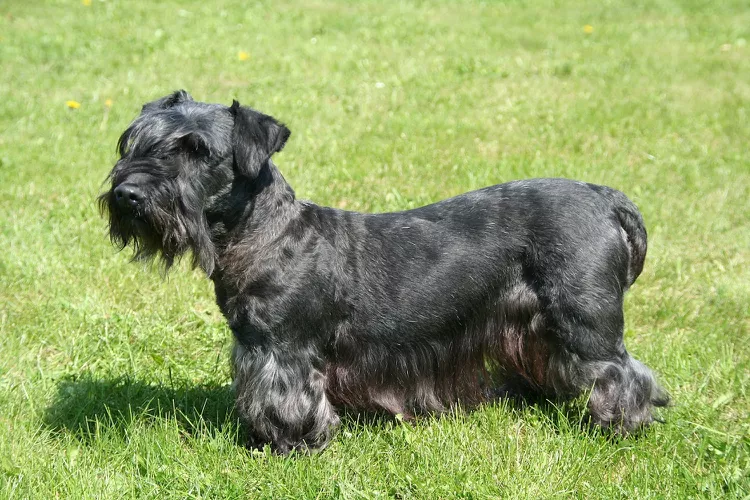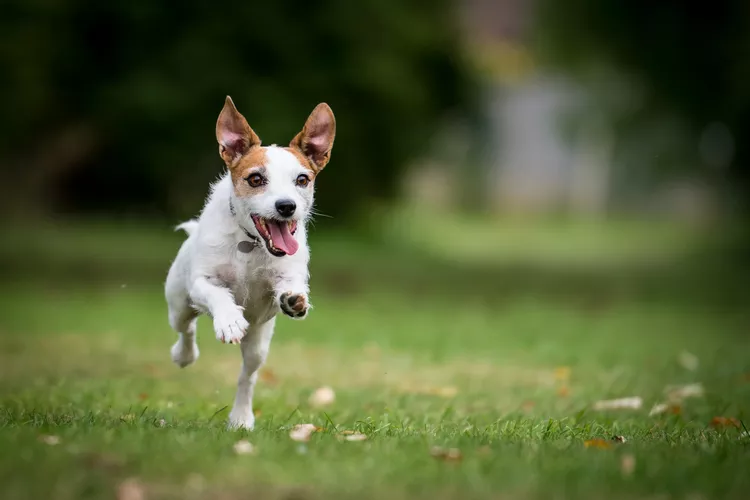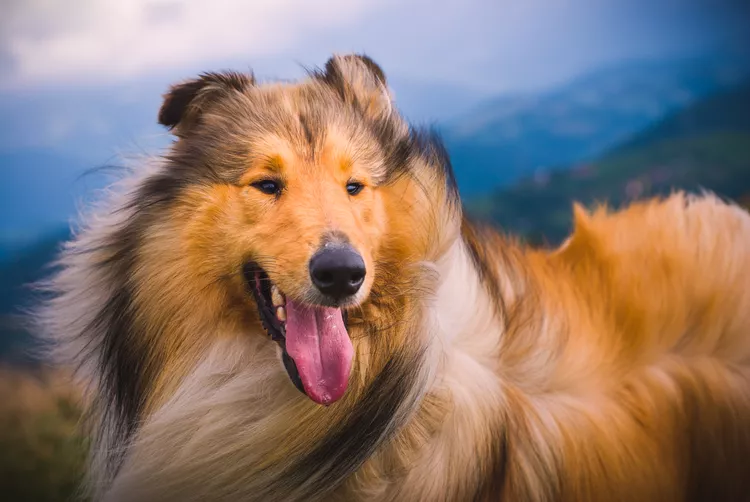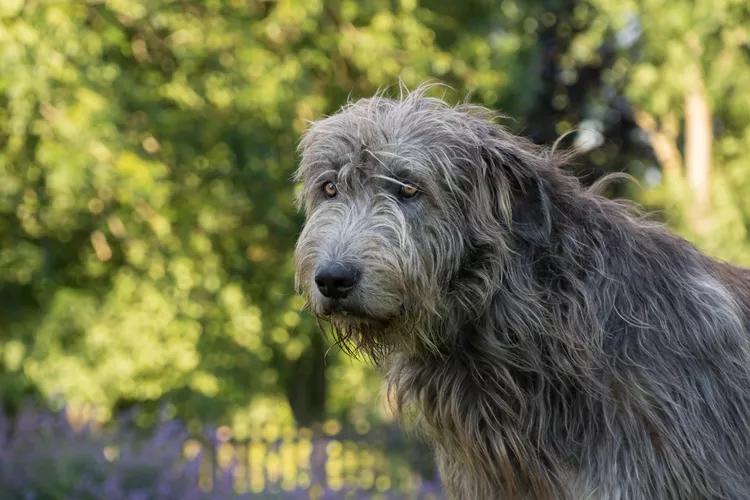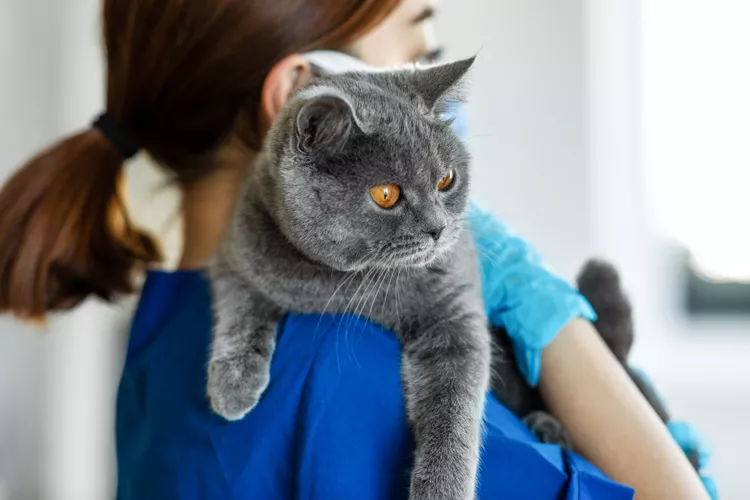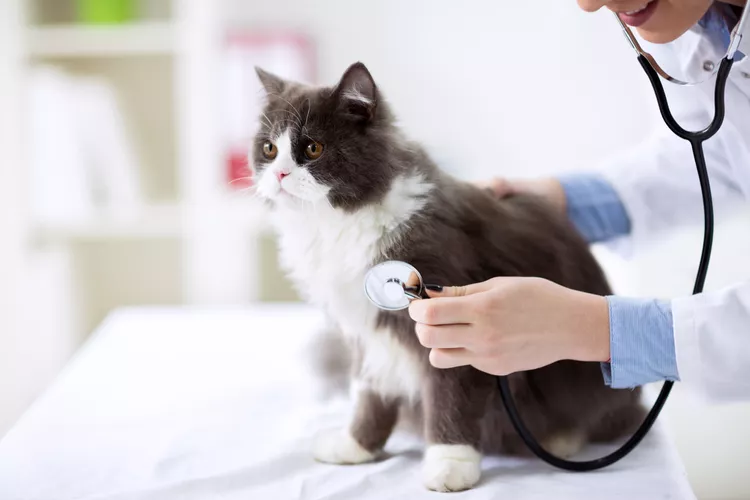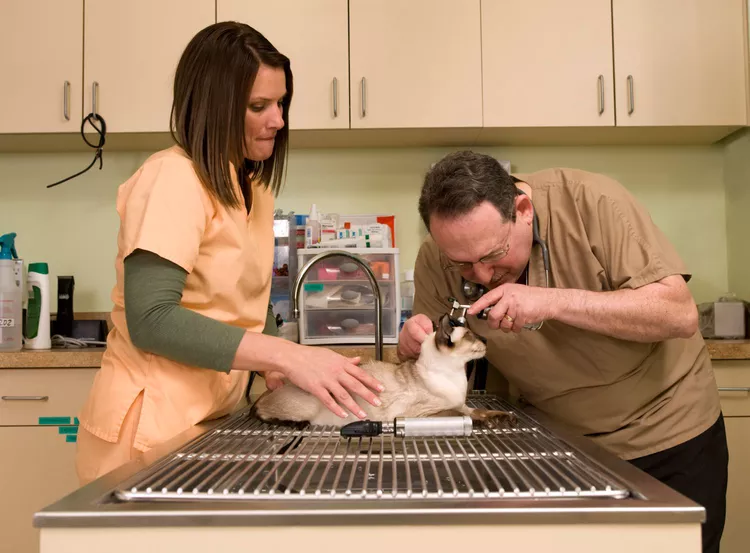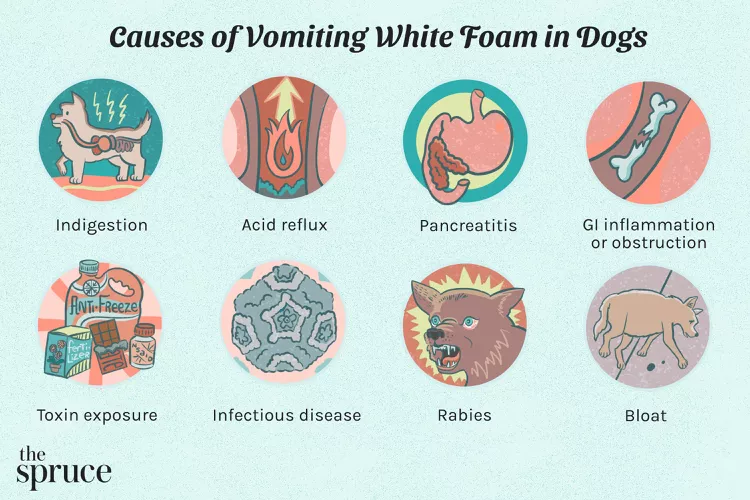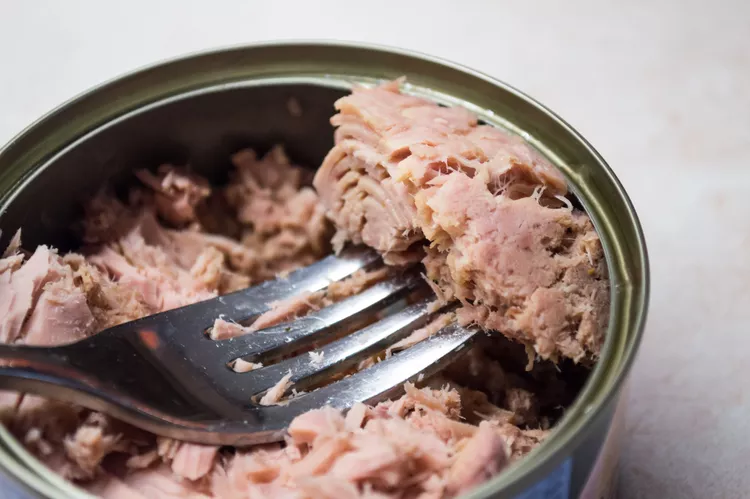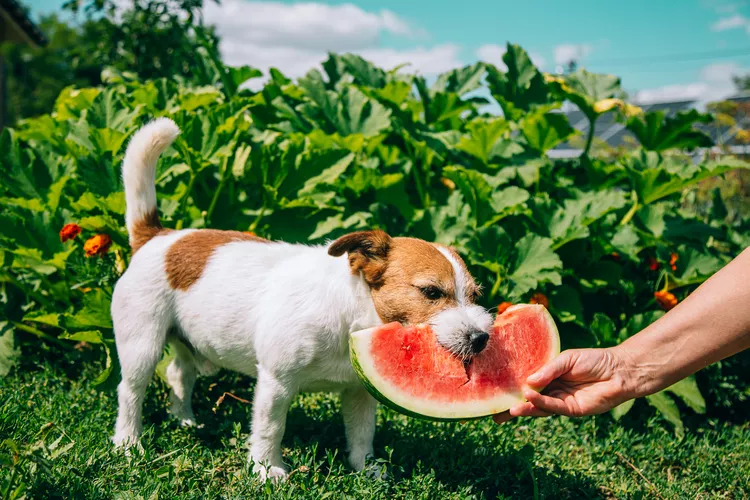The Dogo Argentino is an imposing working dog breed native to Argentina that has a short white coat and a thick, muscular build. Bred as a fighting dog and a big-game hunter, the Dogo is athletic, courageous, and intelligent.
They require lots of exercise every day, but they're also watchful guardians who tend to be very affectionate with their families. Still, this dog breed is typically not ideal for first-time dog owners because its size and exuberance require careful, consistent training and socialization.
Learn more about the Dogo Argentino:
Breed Overview
GROUP: Working
HEIGHT: 24 to 25.5 inches (female), 24 to 26.5 inches (male)
WEIGHT: 80 to 100 pounds
COAT: Short, smooth
COAT COLOR: White
LIFE SPAN: 9 to 15 years
TEMPERAMENT: Loyal, fearless, energetic
HYPOALLERGENIC: No
ORIGIN: Argentina
Characteristics of the Dogo Argentino
The Dogo Argentino tends to have a loving and loyal temperament with their family, and they're even welcoming to most strangers. Their high prey drive often makes them a poor match for other household pets, especially smaller animals. Overall, this is a smart and athletic dog breed that needs a lot of daily activity.
History of the Dogo Argentino
The Dogo Argentino is a relatively new dog breed, originating in 1928 in Argentina. A doctor named Antonio Nores Martinez set out to create a new dog breed, cross-breeding the now-extinct Cordoba fighting dog with the bulldog, bull terrier, boxer, Great Dane, Spanish mastiff, Irish wolfhound, Pyrenean mastiff, and pointer.
Nores Martinez's breed was first used primarily for dog fighting, but then he took some of the dogs with him hunting. Often in packs, the Dogo Argentinos used their strength, bravery, and sense of smell to take on pumas, boars, and other predators in the Argentine wilderness.
The breed arrived in the United States in the 1970s and is still relatively rare. The American Kennel Club first recognized it only in 2020.
Dogo Argentino Care
Because of their high energy, Dogos need vigorous exercise every day. They also should receive consistent training and socialization starting in puppyhood. Grooming is fairly straightforward for these dogs, though they do require sun protection.
Exercise
The Dogo Argentino needs a minimum of 60 minutes of daily exercise. Brisk walks are good, but to really tire out your Dogo, allow them to run freely in a secure area. (This is why they live their best lives in homes with yards.) Try a spirited game of fetch or dog sports, such as agility, obedience, or weight pull. Not only will this challenge the Dogo physically, but it also will allow your dog to burn some mental energy.
Always keep your dog on leash when you're out and about, as the Dogos' high prey drive can cause them to take off quickly if they're not restrained.
Grooming
The Dogo Argentino’s smooth, short coat sheds a moderate amount. It also doesn't typically have much of a doggy odor. Brush weekly with a soft bristle brush or rubber curry brush to remove loose hair and distribute oils. The occasional bath when the dog becomes dirty is usually all that’s necessary.
Check your dog's ears at least weekly for any dirt, debris, redness, or other abnormalities. Your vet can show you how to properly clean the ears. Also, check your dog's nails roughly once a month to see whether they need a trim. And aim to brush their teeth daily.
Furthermore, like other dogs with short, white fur, the Dogo Argentino is susceptible to sunburn. Be mindful of how much time your dog spends in direct sunlight, and discuss sun protection with your vet.
Training
Aim to start training and socialization as young as possible with a Dogo Argentino. These dogs can be difficult to manage if they are ill-mannered, big, and strong adults.
This breed needs a self-assured owner who is consistent about using positive reinforcement training methods. Harsh corrections can hinder learning. Enroll in a puppy obedience class as soon as your dog is old enough.
Expose your dog to different people, other dogs, and various situations to build comfort and confidence. The more a Dogo has positive experiences with new people and dogs, the likelier the Dogo is friendly with them rather than defensive.
Common Health Problems
The Dogo Argentino is typically a healthy breed. However, it is still prone to some health issues. Those include:
- Deafness: Dogs with primarily white fur, like the Dogo Argentino, are more prone to deafness than other pups.
- Hip Dysplasia: While not specifically attributed to the Dogo, some large dogs will live with the failed development of their hip joints.
Diet and Nutrition
Always make sure fresh water is available for your dog, and provide a nutritionally balanced canine diet. Like other large breeds, the Dogo Argentino can benefit from eating a large-breed puppy formula. This will provide the proper nutrition to promote slow, steady growth and help prevent joint issues.
Most owners feed two measured meals per day. Discuss the type of diet and how much your dog needs to eat with your veterinarian, as this can vary by age, size, activity level, and other factors. Also, be mindful about treats and other extra food to prevent your dog from becoming overweight.
Where to Adopt or Buy a Dogo Argentino
The Dogo Argentino is relatively rare in North America. But it's still worth checking area shelters and rescue groups for one in need of a home. If you're looking for a reputable breeder puppy, expect to pay around $2,000 to $3,000, though this can vary widely depending on bloodline and other factors. For further information, check out:
Dogo Argentino Pros and Cons
If you're still trying to decide whether a Dogo Argentino is right for your family, here's a pros and cons list to help:
Pros:
- Loyal, protective
- Easy to groom
- Affectionate
- Happy
Cons:
- Maybe too large for children
- Needs consistent training, socialization
- High prey drive
- Needs space to run around
More Dog Breeds and Further Research
If you’re considering a Dogo Argentino, be sure to do ample research first to make sure it will fit into your lifestyle. Talk to veterinarians, Dogo Argentino owners, reputable breeders, and rescue groups. Try to meet some dogs in person if possible.
If you’re interested in similar breeds, check out:
There’s a whole world of potential dog breeds out there—with a little research, you can find the right one to bring home!
-
Are Dogos Argentino good family dogs?
Dogos Argentino that are well trained and socialized can be good family dogs. However, due to their size, power, and energy, they might not be gentle enough around small children.
-
Are Dogos Argentino aggressive?
Dogos Argentino have a strong protective instinct. They generally like people once they are comfortable with them, but they need good socialization and training to learn how to behave around strangers. Additionally, some Dogos tend to show aggression toward other dogs.
-
Are Dogos Argentino good apartment dogs?
The Dogo Argentino is not a good apartment dog unless the apartment is spacious and you get the dog out for ample daily exercise. These are big dogs that need lots of space to play and burn mental and physical energy.
